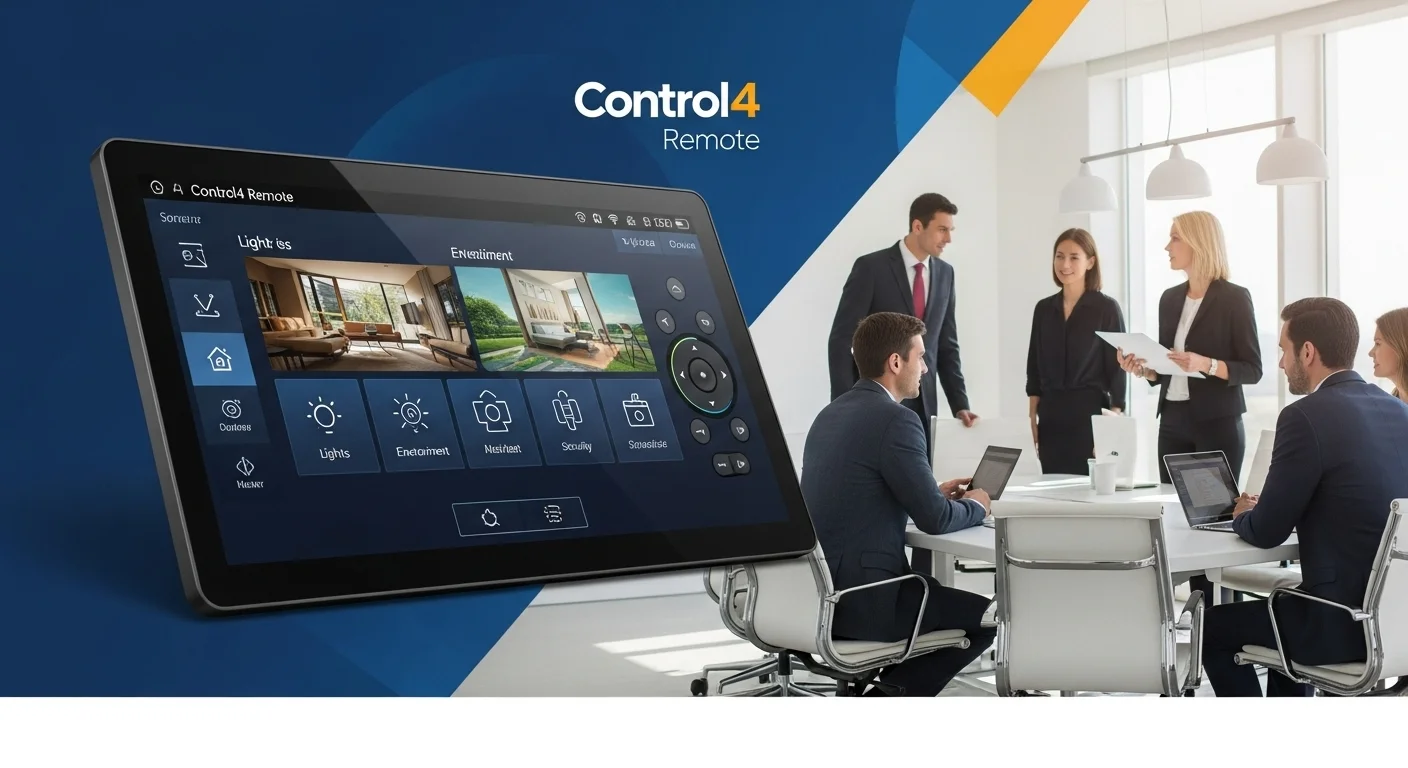The Simple Business Blueprint: How to Thrive in 2025 with Smart Technology

Executive Summary
I've spent over a decade helping entrepreneurs escape the 'hustle harder' trap. The secret isn't more work; it's smarter work. The 'Simple Business' model, powered by today's incredible technology, is the key. This guide is my personal playbook on the powerful connection between simplicity and tech. We'll walk through how essential tools like Artificial Intelligence (AI), cloud computing, and smart cybersecurity aren't just for giant corporations anymore. They are the building blocks for lean, agile, and surprisingly profitable businesses. My goal is to show you how to use technology to slash overhead, streamline your day-to-day, and create real value for your customers. From practical business ideas you can start this weekend to advanced digital strategies, I'm giving you actionable insights. This is for every entrepreneur, including amazing women carving their own paths, who wants to harness tech to build a business that's not only simple to manage but also tough and ready to scale in 2025 and beyond. If you want to build or transform your business based on efficiency and genuine innovation, this is for you.
Table of Contents
Table of Contents
- What is a Simple Business and Why is it Essential Today?
- The Technological Pillars of a Modern Simple Business
- Cloud Computing: Your Foundation for Agility
- AI and Automation: Your Efficiency Engine
- Cybersecurity: Your Shield of Simplicity
- Exploring Simple Business Ideas in the Tech Era
What is a Simple Business and Why is it Essential Today?
When I first started out, 'business' meant 'complex.' It meant offices, servers humming in a closet, and stacks of paperwork. The term 'Simple Business' today has completely flipped that script. In my experience, a simple business isn't about small ambitions; it's a strategic choice to use modern technology to streamline operations, cut out the noise, and maximize what you're great at. It's about designing a company that is simple for you to run, for your team to work in, and for your customers to love, all held together by a smart technology backbone.
You can't overstate how important this is. Technology can be a beast, but its true purpose in business should be to make life easier. When tech adds layers of complexity, it's a liability. When it simplifies, it’s a superpower. This has been a complete game-changer for the small and medium-sized businesses I work with. A few years ago, having top-tier tools for marketing, data analysis, or customer management was a privilege reserved for companies with huge budgets. Now, thanks to cloud computing, Software-as-a-Service (SaaS), and AI, those walls have come down. A solo entrepreneur can now operate with the reach and efficiency of a much larger organization. That, right there, is the magic of this model in the 21st century.
The Technological Pillars of a Modern Simple Business
From my experience, a few key technologies are the absolute foundation of any lean, modern business. Getting to know them is the first step, whether you're launching something new or fixing something that feels broken.
Cloud Computing: Your Foundation for Agility
This is the big one. Cloud services from providers like Amazon Web Services (AWS), Google Cloud, or Microsoft Azure mean you can forget about buying and maintaining expensive physical servers. For a new business, this translates to almost zero upfront hardware cost, no IT team needed for maintenance, and the beautiful ability to scale up or down instantly. The SaaS applications that live on the cloud give you powerhouse tools for everything from accounting (I've seen clients thrive on QuickBooks Online or Xero) to customer relationships (like Salesforce or HubSpot) for a simple monthly fee. This 'pay-as-you-go' approach is the very definition of financial and operational freedom.
AI and Automation: Your Efficiency Engine
I like to call AI the 'engine of simplification.' It's what takes over the boring, repetitive tasks so you and your team can focus on what really matters. Think about it: AI-powered chatbots can handle customer questions around the clock. AI algorithms can sift through your data to create personalized marketing that actually works. And automation tools like Zapier or Make are like digital glue, connecting your apps to create workflows without any code. I had a client set up a flow where a sale on their website automatically created an invoice in their books, added the customer to their newsletter, and sent a shipping alert. That kind of seamless automation eliminates errors and frees up dozens of hours a month.
Cybersecurity: Your Shield of Simplicity
A simple business can look like an easy target for cybercriminals. That's why having simple, effective cybersecurity isn't a 'nice-to-have,' it's a must. The good news is that modern security solutions are designed for people who aren't security experts. Cloud-based security suites, easy-to-use password managers, and multi-factor authentication (MFA) apps allow you to build a strong defense without a dedicated security team. A security breach is the fastest way to introduce crippling complexity into your business; a small investment in simple security preserves the very foundation of your model.
Exploring Simple Business Ideas in the Tech Era
The best part about this tech-powered approach is the explosion of simple business ideas it makes possible. These ventures typically have low startup costs, can be highly automated, and are often runnable from anywhere in the world.
E-commerce is a perfect example, full of simple businesses to start. Take dropshipping: you can sell products without ever touching the inventory. You set up a beautiful online store with a platform like Shopify, and when an order comes in, it's automatically sent to your supplier who ships it directly to the customer. The tech handles the store, payments, and order flow, making it an incredibly lean way to get into retail.
The creator economy is another goldmine of simple small business ideas. If you have expertise or a passion, you can monetize it through a blog, YouTube channel, podcast, or online courses. Platforms like Substack, Patreon, and Teachable provide all the backend infrastructure. They manage content delivery, community, and payments. Your main job is to create—a simple focus powered by a complex system you never have to see.
If you're looking for simple start up business ideas, a service-based company built on your skills is a fantastic choice. Think social media management, freelance writing, or virtual assistance. Tools like Asana, Slack, and Zoom make remote collaboration feel effortless. The business can be launched with just a laptop and an internet connection, which still blows my mind.
I'm also passionate about how this has unlocked countless simple business ideas for ladies and other entrepreneurs who need flexibility. An online boutique on Etsy, a coaching business run via video calls, or a niche blog can be managed around family and life. Tools like Canva for design, AI writers for content help, and Buffer for social media scheduling provide the support to build a successful, manageable business from home. It's about using this powerful tech to build a business that fits your life, not forcing your life to fit a rigid business model.

The Complete Guide to Tech and Solutions for Your Simple Business
Let's get practical. Building a lean, tech-driven business isn't about cutting corners; it's about being strategically smart. It's about achieving your ambitious goals with the least amount of friction. This is the playbook I use with my clients—a blueprint for entrepreneurs who value focus and agility above all else.
Technical Methods for Building a Lean Business
Your technology stack is the foundation. Choosing the right tools and making them work together is everything. The goal is to create an integrated system where your data flows effortlessly and you do as little manual work as possible.
1. The No-Code/Low-Code Revolution: This is, without a doubt, one of the biggest game-changers for new businesses. These platforms let you build websites, apps, and internal tools with visual, drag-and-drop interfaces. I've seen founders build incredible things with Webflow for websites, Bubble for web apps, and Airtable for powerful, custom databases. This means you don't have to hire a team of developers for your first version, slashing costs and letting you test your simple start up business ideas in the real world, fast.
2. API-First Integration: Think of APIs (Application Programming Interfaces) as translators that let your different software tools talk to each other. A simple business thrives on this communication. Instead of one giant, clunky piece of software that does everything poorly, you pick the best tool for each job (like Shopify for sales, Mailchimp for emails, QuickBooks for accounting) and connect them. Integration platforms like Zapier or Make are the central hub. I've helped clients create 'recipes' like: 'When a new customer buys from Shopify, automatically create a profile for them in my CRM and add them to my 'Welcome' email sequence in Mailchimp.' This kind of automation is a massive time-saver and ensures your data is always consistent.
3. Using AI for Operations and Insights: AI isn't science fiction anymore; it's a practical tool for simplification. You can start small, using AI-powered helpdesks like Intercom to answer common customer questions with a chatbot, freeing up your time for more complex issues. In marketing, I've seen tools dramatically improve email open rates by sending messages at the optimal time for each individual user. AI can even help you draft blog posts or social media updates when you're stuck. It gives you insights that once required a whole team of data scientists.
4. Cloud-Native Infrastructure: If you're building a digital business, think 'cloud-native' from day one. For most simple businesses to start, this just means choosing SaaS providers for everything. You're leveraging their massive, professionally managed infrastructure. This approach removes huge operational headaches like server maintenance, backups, and security patching from your to-do list, letting you focus on your actual business.
Business Techniques for Simplicity and Agility
The tech is the tool, but your mindset has to embrace simplicity, too. The Lean Startup and Agile philosophies are a perfect match for this.
1. The Lean Startup Methodology: Popularized by Eric Ries, this is all about cutting out guesswork. The core idea is a loop: Build-Measure-Learn. Instead of spending six months building what you *think* customers want, you build a Minimum Viable Product (MVP)—the simplest possible version of your idea that provides value. You release it to a small group, measure how they use it, and learn what to do next. This iterative process, which is supercharged by no-code tools and cloud tech, is the simplest path to a successful business because you're co-creating it with your customers.
2. Agile Project Management: Whether you're a team of one or ten, thinking 'agile' brings clarity. I live by my Kanban board in Trello. Having simple columns like 'To-Do,' 'In Progress,' and 'Done' gives you an instant visual of your priorities. Breaking big projects into small, manageable tasks keeps you from feeling overwhelmed and ensures you're always making progress. It’s a fantastic way to manage your day-to-day operations.
3. The Freelance Economy is Your Friend: A simple business focuses on what it does best. For everything else? Outsource it. I tell my clients all the time: don't have the time or skill for graphic design? Use a platform like 99designs. Need help with your books? Hire a freelance bookkeeper on Upwork. This turns fixed costs like salaries into flexible, variable costs. You can tap into world-class talent when you need it without the complexities of hiring. This is a core strategy for many simple small business ideas that lets them punch way above their weight.
Resources and Tool Comparisons
- E-commerce Platforms: Think of Shopify as the Apple of e-commerce—incredibly user-friendly and powerful right out of the box. It's my go-to recommendation for anyone with simple business ideas in retail. WooCommerce is a great free option for WordPress, offering more control but requiring a bit more tech comfort. BigCommerce is a strong Shopify competitor, often better for businesses with very large, complex catalogs.
- Website Builders: Squarespace is famous for its beautiful, professional templates, perfect for service businesses and portfolios. Wix has a very intuitive drag-and-drop editor that's great for beginners. Webflow is my favorite for when you need pro-level design control without writing code, bridging the gap perfectly.
- Marketing Automation: Mailchimp is a fantastic starting point for email marketing with a very friendly interface. I often recommend ConvertKit to clients in the creator space as it’s built specifically for them. As a business grows, HubSpot offers an all-in-one platform that can simplify your tech stack by combining your CRM, email, and sales tools in one place.
The choice often comes down to simplicity versus control. Platforms like Shopify are simple but can be rigid. Tools like Webflow offer more control but have a steeper learning curve. As a business owner, you have to be honest about your own comfort level and long-term vision to make the right call. This is especially true for the many simple business ideas for ladies I've seen succeed, where choosing a platform that minimizes tech headaches is the key to maintaining focus and a healthy work-life balance.

Tips and Strategies to Master Your Business Technology
Okay, you've launched. The real challenge now is keeping things simple as you scale. Complexity loves to creep in when you're not looking. Here are my non-negotiable rules and practical tips for using technology wisely, ensuring your business stays lean, secure, and ahead of the game.
Best Practices for a Tech-Savvy Simple Business
Embedding these habits into your operations from the beginning is the easiest way to prevent future headaches. I consider these foundational.
1. Master Your Cybersecurity Hygiene: The beautiful simplicity of your business can be destroyed by one security breach. These simple measures are not optional.
- Use Multi-Factor Authentication (MFA): Turn this on for every single service you use—email, cloud storage, banking, social media. If I could only give one piece of security advice, this would be it. It's the most effective way to stop unauthorized access.
- Get a Password Manager: Please, stop using the same password everywhere. A tool like 1Password or Bitwarden will generate and store unique, complex passwords for you. You only have to remember one master password. It's a lifesaver.
- Have a Backup Plan: Don't rely solely on your cloud provider's backups. Have your own system for critical data, whether that's syncing to a different cloud service or an encrypted local drive. Be prepared.
- Update Your Software: Those update notifications are annoying, I know, but they often contain critical security patches. Keep your operating system, apps, and website plugins up to date.
2. Embrace Data Minimalism: It's tempting to collect every piece of data you can on your customers. My advice? Don't. A simple business only collects the data it absolutely needs to function and provide value. This drastically reduces your storage costs, makes it easier to comply with privacy laws like GDPR, and lowers your risk if a breach ever does happen. For every piece of information you ask for, ask yourself, 'Why do I need this, and how will I use it to make my customer's experience better?'
3. Write It Down: Your Simple Process Playbook: This sounds like corporate busywork, but trust me, it's vital even for a solo founder. Use a simple tool like Notion or just a Google Doc to outline your key workflows. How do you onboard a new client? What's your checklist for publishing a blog post? Documenting these processes makes it incredibly easy to delegate work later. It ensures consistency and saves you from having to reinvent the wheel every time. This is how you turn promising simple start up business ideas into sustainable, scalable operations.
4. Standardize Your Tech Stack: Avoid 'shiny object syndrome.' There's a cool new app launched every day, and it's easy to get distracted. Adding too many random tools creates chaos and hidden costs. Choose a core set of tools that integrate well, learn them inside and out, and stick with them. Before adding anything new, ask, 'Is this truly essential, or can one of my existing tools do the job?' A lean, standardized set of tools is far easier to manage and secure.
Business Tools and Tech Experiences to Enhance Your Workday
The right gear and gadgets can make a surprising difference in your daily efficiency. Many simple small business ideas can be supercharged with these smart integrations.
The Smart Home Office: For the millions of us running businesses from home, this is no longer a gimmick. I use smart lighting that adjusts its color temperature during the day to help with focus and reduce eye strain. Smart plugs automatically turn off non-essential gear after hours to save power. A voice assistant to set reminders or add to my to-do list without breaking my typing flow is a small but powerful productivity hack.
AI for Real Customer Insights: Go deeper than just page views. Modern AI tools can analyze customer feedback from surveys, reviews, and support emails to spot trends and sentiment. This can give you an early warning about a problem or highlight a feature people absolutely love. This kind of deep analysis, once a massive manual task, is now automated and accessible to everyone.
Invest in Your Physical Tech: The hardware you touch every day matters. A great ergonomic chair and keyboard aren't luxuries; they're investments in your health and longevity. A second monitor is, in my opinion, the single biggest productivity booster you can buy. Noise-canceling headphones are a must for deep focus. Before you buy, read reviews from trusted tech sites. It’s a simple, direct investment in your own output.
External Link for Deeper Tech Insights
To stay ahead, you have to keep learning. A fantastic resource I personally read is the MIT Technology Review. It offers deep dives into emerging tech and its real-world impact on business, giving you a glimpse of what's coming next.
Empowering Entrepreneurs: A Special Focus on Simple Business Ideas for Women
Technology has been an incredible force for democratizing entrepreneurship. I've seen firsthand how for women, who often masterfully juggle countless responsibilities, the flexibility and low overhead of these tech-powered businesses are especially liberating. Many of the most successful simple business ideas for ladies I've encountered are built on community, creativity, and connection—all things that technology can scale beautifully. A curated subscription box service can be run with tools like Subbly. A digital marketing agency focused on female-led brands can use collaboration tools to build a global team. The key is that by embracing this 'Simple Business' mindset, female entrepreneurs can build incredibly successful and fulfilling companies that fit their lives. They are proving every day that the most powerful businesses are often built on a foundation of intelligent simplicity.
Expert Reviews & Testimonials
Sarah Johnson, Boutique Owner ⭐⭐⭐⭐
This was a great starting point. I especially liked the section on choosing the right e-commerce platform. It helped me finally decide between Shopify and WooCommerce for my boutique. Could use a few more budget-friendly tool suggestions, though.
Mike Chen, IT Consultant ⭐⭐⭐⭐
As an IT guy, I appreciated the clear breakdown of the tech stack. The explanation of APIs and no-code platforms was spot-on and easy enough for me to share with my non-technical clients. Solid advice.
Emma Davis, Entrepreneur ⭐⭐⭐⭐⭐
Finally, an article that gets it! The 'Simple Business' model is exactly what I've been trying to build. The focus on data minimalism and documenting processes is something I'll be implementing immediately. This is a must-read for any modern founder.



